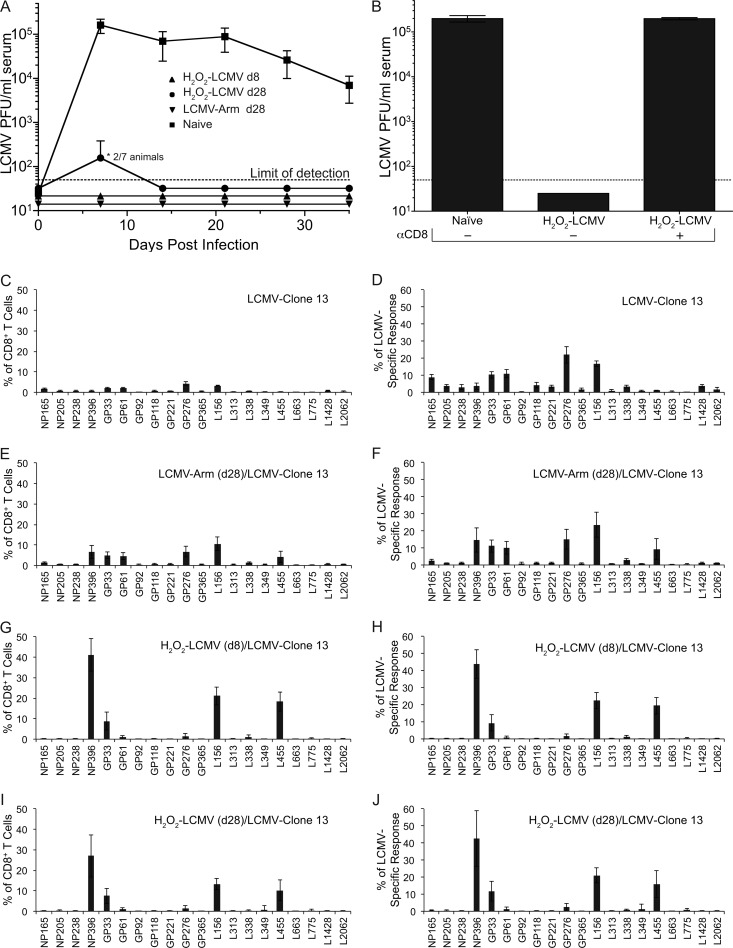Fig 5.
H2O2-LCMV vaccination protects mice against chronic LCMV clone 13 challenge in a CD8+ T cell-dependent manner. C57BL/6 mice were challenged with 2 × 106 PFU LCMV clone 13 at 8 days or 28 days following H2O2-LCMV vaccination or at 28 days following LCMV Arm infection. Serum viremia was determined by plaque assay at weekly intervals (A). To determine if vaccine-induced protection from challenge was CD8+ T cell mediated, a group of animals were vaccinated with H2O2-LCMV followed by CD8+ T cell depletion and LCMV clone 13 challenge (B). CD8+ T cell immunodominance was determined at day 35 following LCMV clone 13 challenge by stimulating T cells with the panel of 20 individual LCMV peptides directly ex vivo followed by ICCS (C to J). Prior to LCMV clone 13 challenge, the animals were either naïve (C and D), infected with LCMV Arm (E and F), or vaccinated with H2O2-LCMV (G to J). LCMV clone 13 challenge occurred 8 days (G and H) or 28 days (E, F, I, and J) following infection or vaccination. Immunodominance profiles are displayed as the percentage of CD8+ T cells producing IFN-γ in response to each peptide (C, E, G, and I) or as the percentage of the total LCMV-specific response (D, F, H, and J). Graphs show the averages ± SDs of 3 to 7 mice per group from 2 independent experiments.

